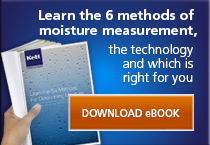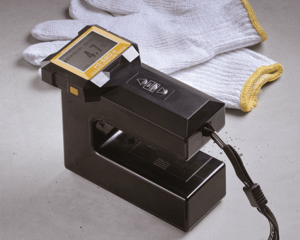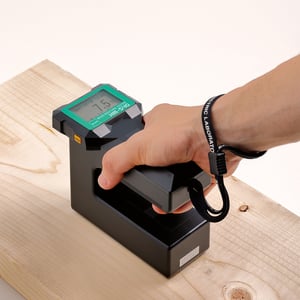 Accurate measurement of moisture content can mean higher profits for businesses. We know this. You know this.
Accurate measurement of moisture content can mean higher profits for businesses. We know this. You know this.
What may be unclear though is which method for determining moisture is the right type for you. Without knowledge on HOW to measure, it follows that you may need further information on WHAT instrument to choose for this purpose. The choice of technology can be overwhelming. We understand this.
In this article we will discuss the Electrical Moisture Method in further detail and outline both the positive aspects and potential drawbacks with the goal of helping you choose the perfect method for your purpose.
What is the Electrical Moisture Meter Method
The electrical moisture method is a secondary method for measuring moisture and is best employed if test time is crucial as it offers an instant moisture reading. It’s also a desirable method if contact with the product is acceptable, accuracy of the highest order is not essential and where cost is a major factor in the decision.
The electrical moisture method is most often used to measure moisture levels of grain and seed, wood, flooring, concrete and in some other agricultural applications.
Some of the numerous ways to use electricity to measure moisture include:
- Capacitance
- Conductance
- Radio Frequency (RF)
These all rely on the dielectric principle. The dielectric constant of a material is proportional to the capacitance of the material and is a measure of its specific polarization or electric dipole moment per unit volume. For most common solid materials, the dielectric constant ranges from 2 to 4. Water, however, has a much higher dielectric constant than these materials (77 - 84), varying slightly with temperatures above 0oC. With this large variance, the water content of the solid can be calculated by measuring the dielectric constant of the solid.
When looking at capacitance, the capacitance of the solid increases with an increase in the number of water molecules per unit volume of the solid. Probes can be affected by salt concentrations. Dielectric and capacitance monitors measure free water molecules.
Why You Would Choose The Electrical Moisture Method
Advantages
- Inexpensive
- Low power – may use batteries
- Easy to use
- Portable
Important to consider though is that these devices saturate at approximately 30-40% water content. They may have problems accurately measuring moisture below 4-6%, depending on the sample. The amount of moisture measured is highly dependent on the contact the probe makes with the product hence good contact is essential as mentioned earlier. These devices can only achieve 0.5% accuracy in best-case situations. Differences in sample density and temperature can affect the measurement.
Who Should Use The Electrical Moisture Method?
Grain producers often use these devices and typically they are also sold to agricultural industries and wood manufacturers with farmers and wood producers being the primary users of the electrical devices. This is due to the ease of use and the low cost of these machines as discussed in the advantages above.
Which one though?
So now we’ve gone through the What, How, Why and Who of Electrical Moisture Measurement, devices such as the PM450 or the PM650 are good options to consider when using this method for grain and seed moisture measurement. For agricultural applications or for wood and concrete measurements a full list of Kett’s electric measurement products can be found here.
Of course if you are still feeling overwhelmed or unsure about how to select the right method of technology for you, contact us and we can talk you through.



